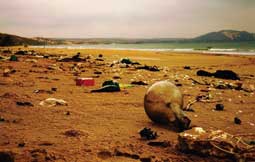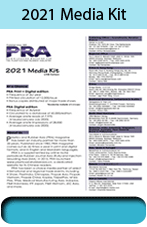Materials news: Asia trying to make a clean break from plastic waste
Southeast Asia’s urbanisation creates more waste
Asia’s rapid urbanisation has spurred industrialisation, infrastructure, technologies and more waste! In the ASEAN alone, more than half its estimated population of 650 million are settled in urban areas. Based on the United Nations’ ASEAN waste management report, the region’s daily per capita Municipal Solid Waste (MSW) generation is 1.14 kg. Indonesia accounts for the highest bulk of municipal waste with 64 million tonnes/year, followed by Thailand, generating an estimated 26.8 million tonnes/year, and Vietnam, with around 22 million tonnes.
Meanwhile, the Philippines, Malaysia and Singapore churned out 14.7 million tonnes, 12.8 million tonnes, and 7.5 million tonnes of MSW respectively; while Myanmar and Laos generated below 1 million tonnes/year.
The waste streams comprise organic waste, plastic, paper, metals, healthcare waste, E-waste, industrial waste, and construction and demolition waste.

A 2020 World Wide Fund (WWF) report says that Southeast Asia and China are responsible for an average of 8 million tonnes of plastics entering the oceans, 80% of which are from land-based sources entering through the rivers. Marine waste that decomposes into microplastics can harm some 800 species of marine life. Five countries in Asia: China, Indonesia, Thailand, Vietnam and the Philippines, account for 60% of plastics entering the oceans.
Land-based plastic waste is as problematic as marine debris because it can contaminate the soil and water sources. When improperly disposed of or incinerated, it can cause air pollution.
The WWF briefing report mentioned that plastic production and incineration accounted for 860 million tonnes of carbon emissions in 2019. Meanwhi le, packaging, which is the largest user of plastics, is found to represent nearly half of the global plastic waste.
Collective efforts against uncontrolled waste
More than a few projects on plastic wastes and marine litter have been launched by private groups, businesses and non-governmental organisations to find solutions to curb the accumulation of plastic waste through technologies, policies, and advanced modalities of waste management. Among the most active ones are Plastic Pollution Coalition (2013), Clean Ocean Project (2000), 5 Gyres (2009), Ocean Conservancy (1972), Parley for the Oceans (2012) and Oceans Cleanup(2013).
UK-based charity, Ellen McArthur Foundation, espouses a circular economy that does not produce waste since it is “regenerative and restorative” by design. As opposed to the “take-make-waste” linear model, a circular economy reutilises and remanufactures old, used materials, or they are recycled into sources of energy.
By all standards, Southeast Asia is being primed to spearhead the circular economy in the region, considering its rapid industrialisation and huge consumption of plastics.

A project launched by the United Nations Economic and Social Commission for Asia and the Pacific (ESCAP) and the government of Japan, Closing the Loop, will support ASEAN cities to adopt a circular economy approach to manage their waste, increase the rate of recovery and reduce the leakage of plastics into the marine environment. The pilot cities for the project are Kuala Lumpur, Malaysia; Surabaya, Indonesia; Nakhon Si Thammarat, Thailand; and Danang, Vietnam.
The project will assist national governments to utilise digital tools and smart technologies such as such as remote sensing, satellite, drones, geospatial mapping, and crowdsourced data applications to monitor, spot, and visualise the sources of plastic waste entering water streams and the oceans.
India finds relief from marine litter
India, South Asia’s economic stalwart, is poised to transform into a US$7 trillion economy by 2030, and by adopting a circular economy strategy can, experts bel ieve, steer the count ry to the r ight di rect ion. Meanwhile, as the country expands its industrial capabilities, its consumption of plastics to feed its middle-income country ambition is also increasing. And as anticipated, more plastic waste will be generated.
A 2019 report by the Central Pollution Control Board (CPCB) pegs India’s total plastic waste output at 3.3 million tonnes/year. Although waste management by recycling is a straightforward option, India’s recycling system is inadequate for managing the rapid pace of waste generation.
A significant volume of this waste finds its way into the water systems and oceans. In South Asia, seas bordering Bangladesh, India, Maldives, Pakistan, and Sri Lanka are destinations for marine litter. Three of the top ten plastic-polluted rivers in the world can be found in the region: Ganges (or Ganga) in India, Indus in Pakistan, and Buriganga in Bangladesh. Resuscitating these rivers from pollution is vital to the environment, human health, and the survival of marine life and wildlife.
The more than 2,500-km long Ganges river is a major source for water to hundreds of millions of people and the diverse wildlife inhabiting around it. It is also a basin to an estimated 500,000 tonnes/year of waste plastics entering the river, according to Renew Oceans, an India-based foundation that ceased operating in October 2020.
The now defunct organisation had launched a dedicated project called Renew Ganga in 2019, to divert ocean bound plastics. It planned on building waste infrastructure around the river.
Singapore-headquartered Alliance to End Plastic Waste (AEPW), an organisation of 50 global companies across the entire plastic value-chain, including major oil and chemical firms, packaging producers, waste management companies, converters and brands, financed Renew Oceans’ programmes and provided materials and logistics support.
Read more...
(PRA) Subscribe to Get the Latest Updates from PRA Please click here
©2021 Plastics and Rubber Asia. All rights reserved.

©2020 Plastics and Rubber Asia. All rights reserved.
Home Terms & Conditions Privacy Policy Webmail Site Map About Us













